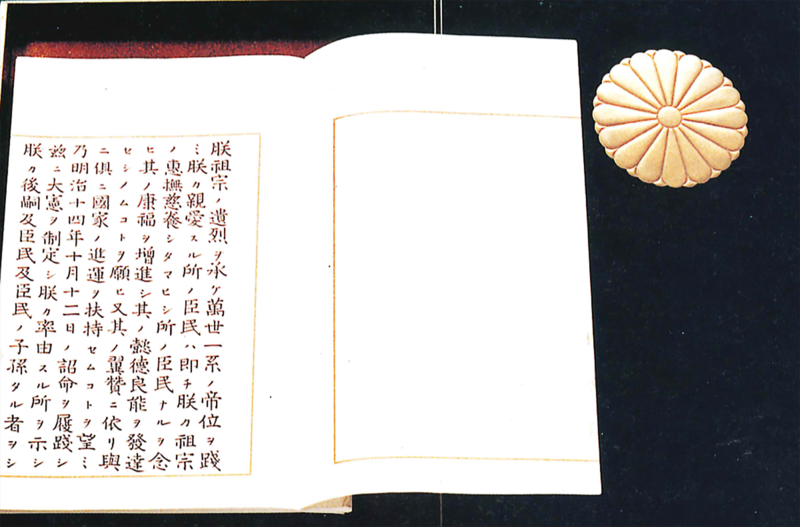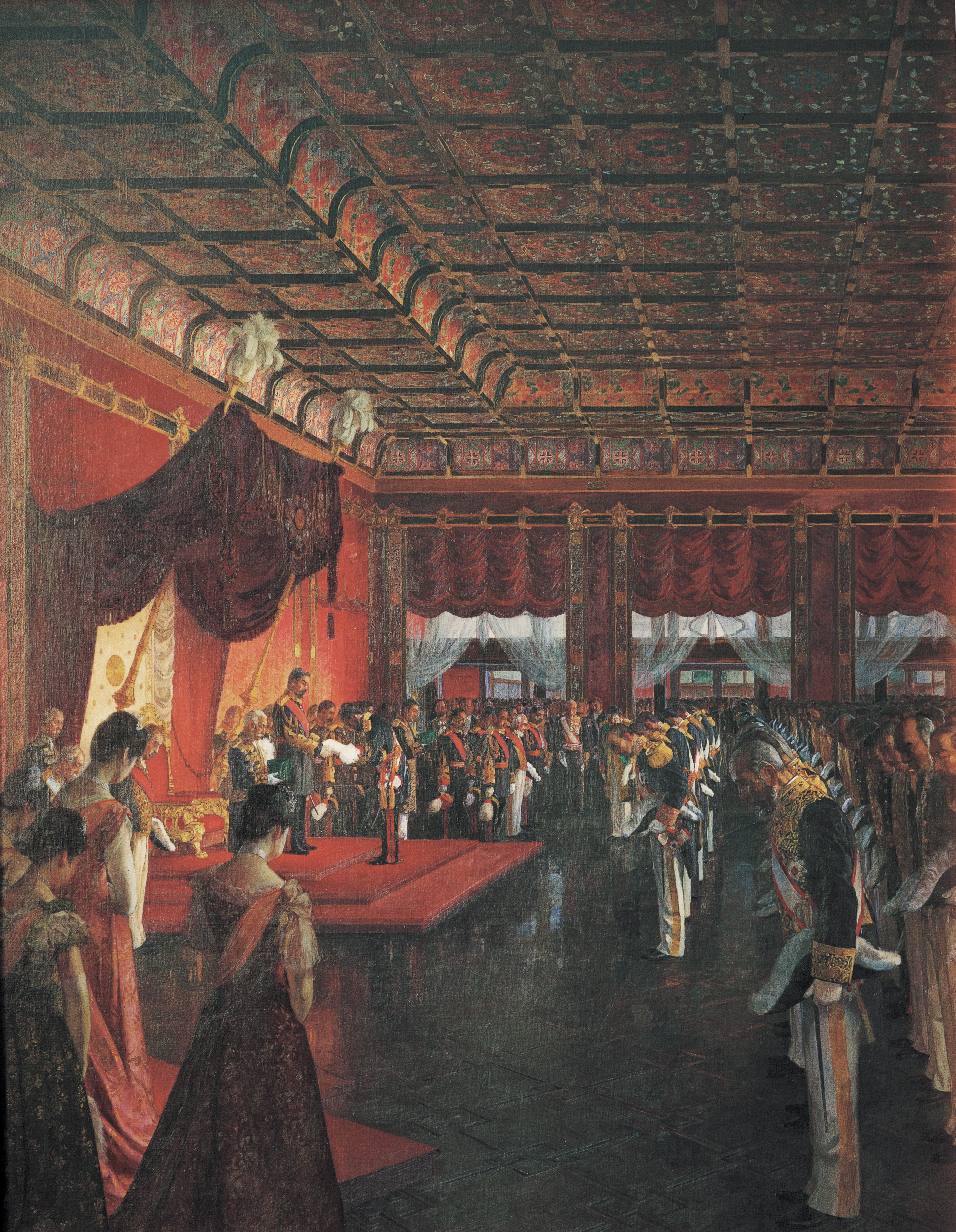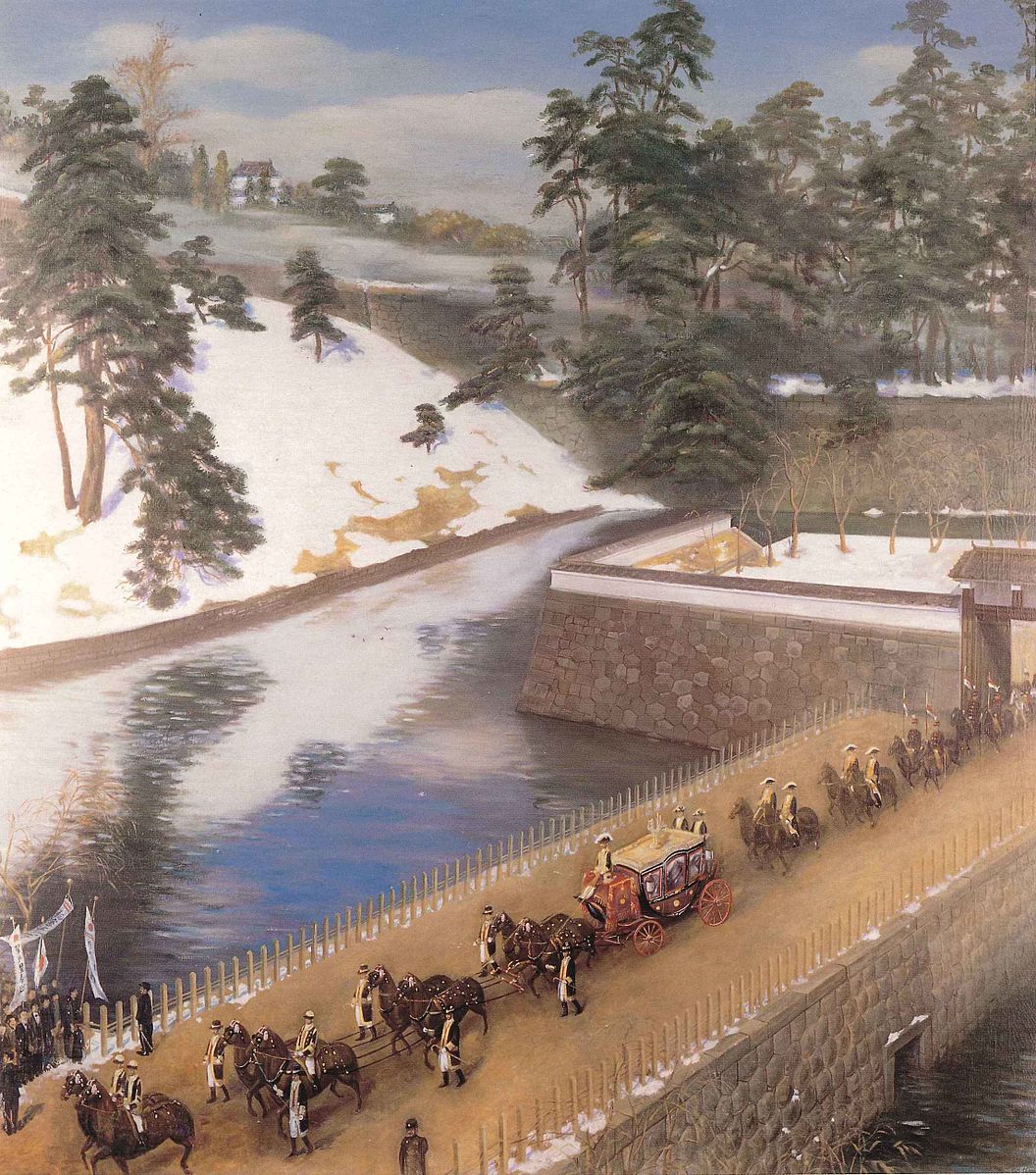Abolishment of the Edo Feudal Hierarchy:
The Successes and Consequences for Japan
Meiji Constitution
Soon after the Satsuma Rebellion, the Meiji government began to construct a constitution. The constitution’s goal was to provide national unity and diplomacy, which would, in turn, present more opportunities to strengthen their government. The proposition to form a constitution evolved into a matter of controversy with skepticism about the possibility of implementing democracy and republicanism into the Japanese government. Despite all this, the imperial regime promised to implement a constitution by 1889.

Preamble of the Meiji Constitution, Prime Minister's Office of Japan, 1902
"We now declare to respect and protect the security of the rights and of the property of Our people, and to secure to them the complete enjoyment of the same, within the extent of the provisions of the present Constitution and of the law."
~ Translated excerpt from the Constitution of the Empire of Japan
"ARTICLE
XXXV.
The
House
of
Representatives
shall
be
composed
of
Members
elected
by
the
people,
according
to
the
provisions
of
the
Law
of
Election."
~ Translated excerpt from the Constitution of the Empire of Japan
The samurai class believed that a parliamentary system would be most advantageous to their class, as it potentially offered them the opportunity to reobtain their lost positions within the Tokugawa shogunate. Many imperialists were heavily against the idea. Former samurai resigned from their government roles and began seeking endorsement throughout the nation by forming political groups such as the Liberal Party.


"Ceremony for the Promulgation of the Constitution."
Eisaku, Wada, circa 1959
"Conference on Drafting a Constitution."
Hōryū II, Goseda, 1926
"The Meiji Constitution's Military Parade."
Tokurō, Katada, circa 1934

In the end, the imperial administration followed through with its promise by proclaiming an official constitution on February 11, 1889, titled the Constitution of the Empire of Japan (Meiji Constitution).